Angélica Diaz-Pulido
Camera-trap images segmentation using multi-layer robust principal component analysis
Dec 30, 2017
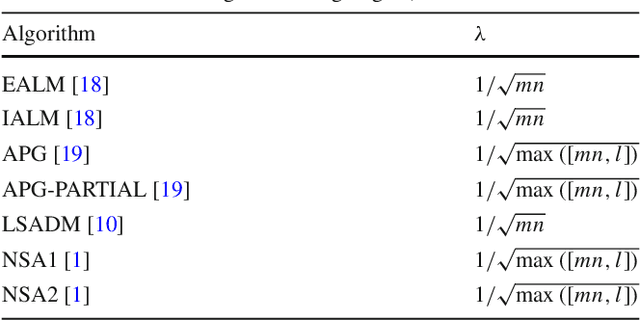
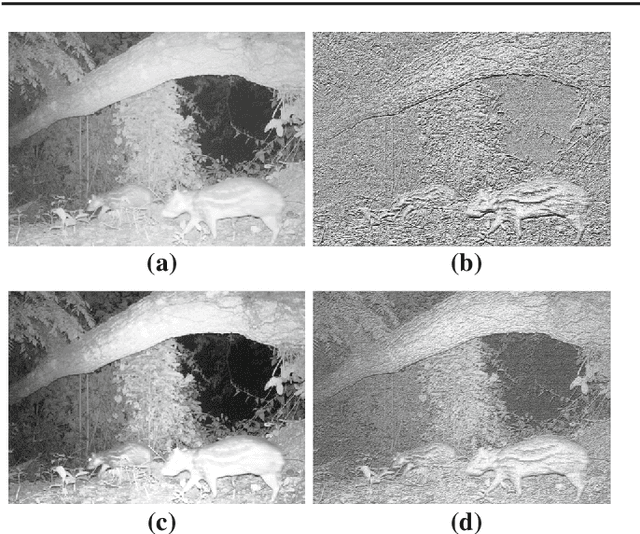
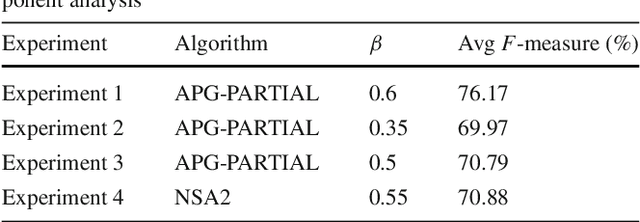
Abstract:The segmentation of animals from camera-trap images is a difficult task. To illustrate, there are various challenges due to environmental conditions and hardware limitation in these images. We proposed a multi-layer robust principal component analysis (multi-layer RPCA) approach for background subtraction. Our method computes sparse and low-rank images from a weighted sum of descriptors, using color and texture features as case of study for camera-trap images segmentation. The segmentation algorithm is composed of histogram equalization or Gaussian filtering as pre-processing, and morphological filters with active contour as post-processing. The parameters of our multi-layer RPCA were optimized with an exhaustive search. The database consists of camera-trap images from the Colombian forest taken by the Instituto de Investigaci\'on de Recursos Biol\'ogicos Alexander von Humboldt. We analyzed the performance of our method in inherent and therefore challenging situations of camera-trap images. Furthermore, we compared our method with some state-of-the-art algorithms of background subtraction, where our multi-layer RPCA outperformed these other methods. Our multi-layer RPCA reached 76.17 and 69.97% of average fine-grained F-measure for color and infrared sequences, respectively. To our best knowledge, this paper is the first work proposing multi-layer RPCA and using it for camera-trap images segmentation.
* This is a pre-print of an article published in The Visual Computer. The final authenticated version is available online at: https://doi.org/10.1007/s00371-017-1463-9
Automatic Recognition of Mammal Genera on Camera-Trap Images using Multi-Layer Robust Principal Component Analysis and Mixture Neural Networks
May 08, 2017

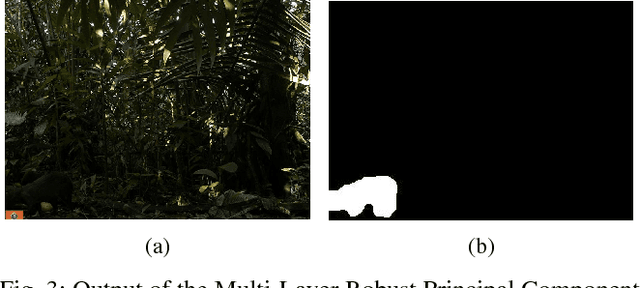
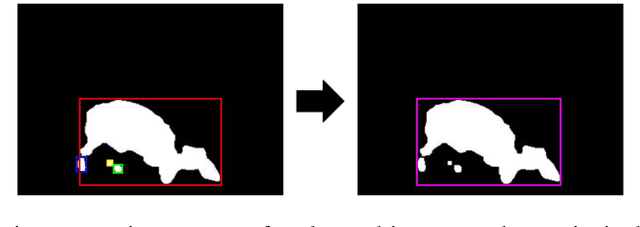
Abstract:The segmentation and classification of animals from camera-trap images is due to the conditions under which the images are taken, a difficult task. This work presents a method for classifying and segmenting mammal genera from camera-trap images. Our method uses Multi-Layer Robust Principal Component Analysis (RPCA) for segmenting, Convolutional Neural Networks (CNNs) for extracting features, Least Absolute Shrinkage and Selection Operator (LASSO) for selecting features, and Artificial Neural Networks (ANNs) or Support Vector Machines (SVM) for classifying mammal genera present in the Colombian forest. We evaluated our method with the camera-trap images from the Alexander von Humboldt Biological Resources Research Institute. We obtained an accuracy of 92.65% classifying 8 mammal genera and a False Positive (FP) class, using automatic-segmented images. On the other hand, we reached 90.32% of accuracy classifying 10 mammal genera, using ground-truth images only. Unlike almost all previous works, we confront the animal segmentation and genera classification in the camera-trap recognition. This method shows a new approach toward a fully-automatic detection of animals from camera-trap images.
 Add to Chrome
Add to Chrome Add to Firefox
Add to Firefox Add to Edge
Add to Edge